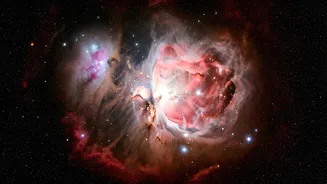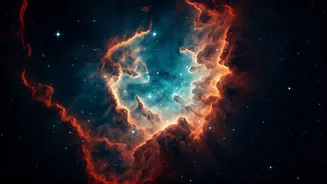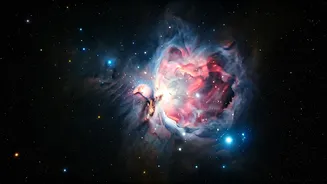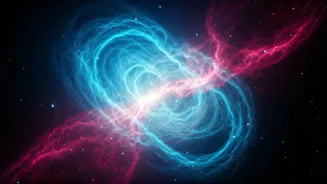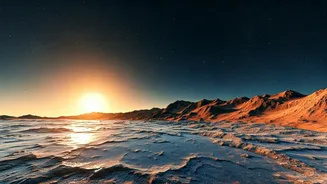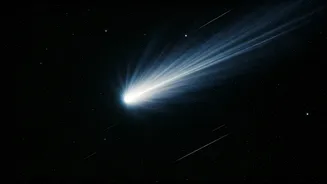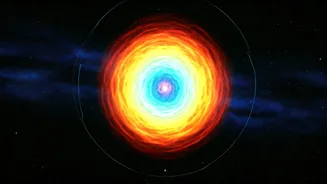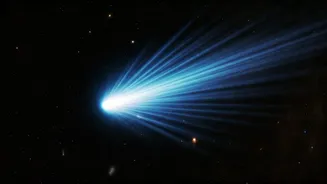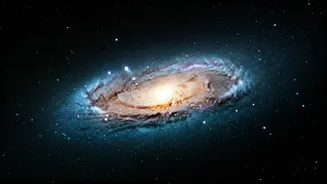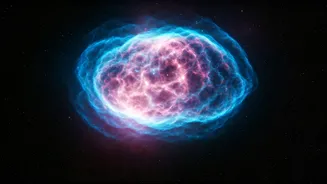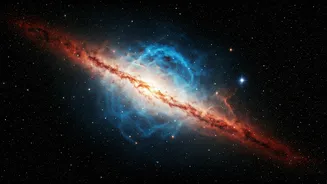Cosmic Tapestry Unveiled
NASA frequently shares its most recent findings with the public, and in this instance, it is offering a collection of 12 images. These images capture the incredible
diversity of the cosmos, illustrating the awe-inspiring complexity and beauty of space. These images are the result of advanced instruments and the dedication of countless scientists and engineers. They aren't just pretty pictures; they're valuable data points, helping us grasp the universe better. Each image tells a story of cosmic events, from the birth of stars to the collision of galaxies. The images range from close-up views of planets and their moons to vast, sprawling nebulae and distant galaxies, each revealing something new about the universe and our place within it.
Nebulae: Stellar Nurseries
Several of the images capture nebulae, which are essentially stellar nurseries. They are giant clouds of gas and dust where new stars are born. The images show a vibrant array of colors, from the pinks and reds of hydrogen gas to the blues of oxygen. These colors arise from the interaction of the starlight with the gases. Nebulae can take on many shapes and sizes, from the iconic Pillars of Creation to the vast, billowing clouds that stretch across light-years of space. Studying these structures helps astronomers learn about the life cycle of stars, how they form, and the conditions needed for planet formation. The images highlight the dynamic nature of these celestial formations, where stars are continually being born and reshaping the surrounding material, a truly magnificent display.
Galaxies: Island Universes
The images also feature several galaxies, vast collections of stars, gas, dust, and dark matter, all held together by gravity. These island universes come in various shapes, from the familiar spiral arms to elliptical and irregular formations. The images reveal the intricate structures within galaxies, the distribution of stars, and the presence of supermassive black holes at their centers. The colors provide clues about the composition of the galaxies, with blue indicating younger stars and red indicating older ones. Some images show galaxies interacting with each other, pulling and distorting each other's shapes as they merge. These interactions can trigger bursts of star formation, leading to even more cosmic fireworks. Other images showcase galaxies billions of light-years away, offering insights into the early universe and its evolution.
Planetary Views: Worlds Revealed
A selection of images showcases planets within our solar system. Images of Jupiter, Saturn, Mars, and other planets highlight their unique features, from the swirling clouds of Jupiter to the rings of Saturn. These images are captured by telescopes and spacecraft equipped with high-resolution cameras, allowing scientists to study the planets in detail. The images reveal information about the planets' atmospheres, surfaces, and internal structures. They also help researchers to detect seasonal changes, weather patterns, and geological activity. Detailed imagery gives us better comprehension about planets, and whether or not they could be hospitable to life. As technology improves, we get even more detailed views of these worlds, offering ongoing insights into their composition, formation, and evolution, while providing inspiration to many.
Beyond the Visible Spectrum
The images are captured across the electromagnetic spectrum, with some taken in visible light, and others in infrared, ultraviolet, and X-ray. Each spectrum provides a different perspective on the universe, revealing aspects that are invisible to the naked eye. Infrared light penetrates dust clouds, allowing astronomers to see regions of star formation. Ultraviolet light highlights hot, energetic phenomena, such as supernova remnants. X-rays, often associated with black holes and other extreme objects, offer views into high-energy environments. Combining data from multiple spectra helps scientists understand the universe more comprehensively. Images taken in various wavelengths give scientists the information needed to grasp the many facets of space, which is critical to scientific progress.
Scientific Significance of Data
The images released by NASA aren't just for aesthetic appreciation; they have immense scientific value. They provide data that helps scientists study the formation and evolution of stars and galaxies. The analysis of these images helps us to determine the composition of celestial objects, the distances between them, and their motions. Through careful study, astronomers can learn about the fundamental laws of physics and the nature of dark matter and dark energy. The images often reveal unexpected features and phenomena, which can lead to new discoveries and scientific breakthroughs. The information in these images helps improve our understanding of the universe, and its intricate workings. In addition to contributing to scientific understanding, these images inspire and educate the public.
Artistic and Inspirational Beauty
The images shared by NASA are also visually stunning, representing the power and beauty of the cosmos. The vibrant colors, intricate details, and grand scales are all elements that evoke a sense of awe and wonder. These images serve as a source of inspiration for artists, writers, and anyone interested in space exploration. They can be found in museums, books, and online, inspiring a wide audience to learn about space. Such imagery encourages people to consider what is beyond Earth and our place in the universe. The pictures help foster a sense of connection to the cosmos, and highlight the beauty of the natural world, both near and far. These images also remind us of the incredible accomplishments of science and engineering.
